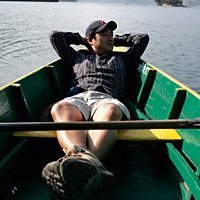Jae H Choi
age ~54
from Marietta, GA
- Also known as:
-
- Jae Hyung Choi
- Jaehyung H Choi
- Jae-Hyung Choi
- Phone and address:
- 3000 Canton View Walk, Marietta, GA 30068
Jae Choi Phones & Addresses
- 3000 Canton View Walk, Marietta, GA 30068
- Closter, NJ
- Cresskill, NJ
- Englewood Cliffs, NJ
- Leesburg, VA
- Edgewater, NJ
- Palisades Park, NJ
Medicine Doctors

Dr. Jae H Choi, New York NY - MD (Doctor of Medicine)
view sourceSpecialties:
Obstetrics & Gynecology
Anesthesiology
Anesthesiology
Address:
367 7Th Ave Suite 407, New York, NY 10001
2126913066 (Phone)
Rockland County Health Dept
50 Sanitorium Rd, Pomona, NY 10970
8453642512 (Phone)
2126913066 (Phone)
Rockland County Health Dept
50 Sanitorium Rd, Pomona, NY 10970
8453642512 (Phone)
Certifications:
Anesthesiology, 1973
Obstetrics & Gynecology, 1976
Obstetrics & Gynecology, 1976
Languages:
English
Korean
Korean
Education:
Medical School
Seoul National University, College Of Medicine
Graduated: 1967
Medical School
Ny Polyclin-French Hosp
Graduated: 1967
Seoul National University, College Of Medicine
Graduated: 1967
Medical School
Ny Polyclin-French Hosp
Graduated: 1967
Background:
Sanction: 1 time(s)

Dr. Jae Choi, Englewood Cliffs NJ - DDS (Doctor of Dental Surgery)
view sourceSpecialties:
Dentistry
Age:
51
Address:
701 E Palisade Ave Suite 200, Englewood Cliffs, NJ 07632
2015410090 (Phone)
2015410090 (Phone)
Languages:
English

Dr. Jae Hyuk Choi, New York NY - DDS (Doctor of Dental Surgery)
view sourceSpecialties:
Dentistry
Address:
177 Prince St Suite 300, New York, NY 10012
2125055055 (Phone)
2125055055 (Phone)
Languages:
English

Jae M Choi, Smyrna GA - OD (Doctor of Optometry)
view sourceSpecialties:
Optometry
Cornea & Contact Management
Cornea & Contact Management
Address:
1675 Cumberland Pkwy Se Suite 103, Smyrna, GA 30080
7704380202 (Phone), 7704385033 (Fax)
7704380202 (Phone), 7704385033 (Fax)
Languages:
English

Jae Ho Choi, Palisades Park NJ
view sourceSpecialties:
Acupuncture
Address:
123 Grand Ave, Palisades Park, NJ 07650
2015852530 (Fax)
2015852530 (Fax)
Languages:
English

Jae H. Choi
view sourceSpecialties:
Internal Medicine
Work:
Rockland County Health Department
50 Sanatorium Rd BLDG J, Pomona, NY 10970
8453642534 (phone), 8453642628 (fax)
50 Sanatorium Rd BLDG J, Pomona, NY 10970
8453642534 (phone), 8453642628 (fax)
Education:
Medical School
Seoul Natl Univ, Coll of Med, Chongno Ku, Seoul, So Korea
Graduated: 1967
Seoul Natl Univ, Coll of Med, Chongno Ku, Seoul, So Korea
Graduated: 1967
Languages:
English
Spanish
Spanish
Description:
Dr. Choi graduated from the Seoul Natl Univ, Coll of Med, Chongno Ku, Seoul, So Korea in 1967. He works in Pomona, NY and specializes in Internal Medicine.

Jae Hyuk Choi, Norfolk VA
view sourceSpecialties:
Dentist
Address:
2338 E Little Creek Rd, Norfolk, VA 23518
5312 Bleecker St, Virginia Beach, VA 23462
177 Prince St, New York, NY 10012
5312 Bleecker St, Virginia Beach, VA 23462
177 Prince St, New York, NY 10012
Resumes

Jae Choi Washington, DC
view sourceWork:
TASC
Dec 2012 to 2000
Financial Analyst IV CGI Federal
Fairfax, VA
Mar 2012 to Dec 2012
Consultant BCF Solutions, Inc
Washington, DC
Nov 2010 to Mar 2012
Business Manager, Financial Analyst Federal Aviation Administration, Clearance Obtained L-3 Communications
Washington, DC
Aug 2009 to Nov 2010
Financial Analyst, Federal Aviation Administration, Clearance Obtained Corporate Executive Board
Washington, DC
Feb 2008 to Aug 2009
Finance Manager Information Concepts Inc
Herndon, VA
Oct 2007 to Feb 2008
Quality Assurance Analyst, Internal Revenue Service, Clearance Obtained Corporate Executive Board
Washington, DC
Nov 2005 to Sep 2007
Finance Specialist
Dec 2012 to 2000
Financial Analyst IV CGI Federal
Fairfax, VA
Mar 2012 to Dec 2012
Consultant BCF Solutions, Inc
Washington, DC
Nov 2010 to Mar 2012
Business Manager, Financial Analyst Federal Aviation Administration, Clearance Obtained L-3 Communications
Washington, DC
Aug 2009 to Nov 2010
Financial Analyst, Federal Aviation Administration, Clearance Obtained Corporate Executive Board
Washington, DC
Feb 2008 to Aug 2009
Finance Manager Information Concepts Inc
Herndon, VA
Oct 2007 to Feb 2008
Quality Assurance Analyst, Internal Revenue Service, Clearance Obtained Corporate Executive Board
Washington, DC
Nov 2005 to Sep 2007
Finance Specialist
Education:
Virginia Commonwealth University
Richmond, VA
2005
Bachelor of Science in Business Management
Richmond, VA
2005
Bachelor of Science in Business Management
Skills:
Excel, VBA, Budgeting, Reporting, Auditing, Revenue Management
Real Estate Brokers

Jae Choi, Potomac MD
view sourceSpecialties:
Buyer's Agent
Listing Agent
Listing Agent
Work:
Jae Choi
12528 Ansin Circle Drive, Potomac, MD 20854
9172160786 (Office)
12528 Ansin Circle Drive, Potomac, MD 20854
9172160786 (Office)
Name / Title
Company / Classification
Phones & Addresses
President
Star Liquor Corp
Ret Alcoholic Beverages
Ret Alcoholic Beverages
5075 Old National Hwy, Atlanta, GA 30349
4047626918
4047626918
Owner
The Collective Shift LLC
Services-Misc
Services-Misc
466 Broome St, New York, NY 10013
2122261544
2122261544
CFO
THE SOUTHEASTERN PRESBYTERY, INC
2780 Buford Hwy, Duluth, GA 30096
1302 Sweet Gum Dr, Brandon, FL 33511
1302 Sweet Gum Dr, Brandon, FL 33511
Principal
Cleaners In Jaes Professional
Repair Services
Repair Services
10800 Jones Brg Rd, Alpharetta, GA 30022
Family And General Dentistry
Jae Lim Choi DDS LLC
Dentist's Office
Dentist's Office
701 E Palisade Ave, Englewood, NJ 07632
Od, Owner, Principal
CHOI & BANG, O.D., PC
Optometrist's Office
Optometrist's Office
4119 Oberon Dr, Smyrna, GA 30080
1675 Cumberland Pkwy SE, Smyrna, GA 30080
1675 Cumberland Pkwy SE, Smyrna, GA 30080
Chairman of the Board
J C Kew Garden Deli and Grocery Inc
Ret Groceries
Ret Groceries
12088 Queens Blvd, Jamaica, NY 11415
7185750235
7185750235
LAW OFFICE OF JAE CHOI & ASSOCIATES, PC
1133 Broadway SUITE 706, New York, NY 10010
206 Grant Ave, Cliffside Park, NJ 07010
206 Grant Ave, Cliffside Park, NJ 07010
Lawyers & Attorneys

Jae Won Choi - Lawyer
view sourceLicenses:
Tennessee - Active 2009

Jae S Choi - Lawyer
view sourceAddress:
Barun Law
234797518x (Office)
234797518x (Office)
Licenses:
Dist. of Columbia - Active 1999

Jae Yong Choi - Lawyer
view sourceAddress:
Ge Commerical Finance- Corporate Financial Services- Korea Asset Manag
18991092xx (Office)
18991092xx (Office)
Licenses:
New York - Delinquent 2005
Education:
University of Sydney

Jae Duk Choi, Haworth NJ - Lawyer
view sourceAddress:
Tax Technologies, Inc.
Po Box 176, Haworth, NJ 07641
2013879451 (Office)
Po Box 176, Haworth, NJ 07641
2013879451 (Office)
Licenses:
New York - Due to reregister within 30 days of birthday 1995

Jae Duk Choi, Haworth NJ - Lawyer
view sourceAddress:
Haworth, NJ
2013879451 (Office)
2013879451 (Office)
Licenses:
New Jersey - Active 1995

Jae Seog Choi - Lawyer
view sourceLicenses:
New York - Delinquent 1998
Education:
Southern Methodist

Jae Duk Choi, Haworth NJ - Lawyer
view sourceOffice:
P.o. Box 176, Haworth, NJ
ISLN:
910583914
Admitted:
1995
University:
University of Texas at Arlington, B.B.A.
Law School:
New York Law School, J.D.
Us Patents
-
Method And System For Providing A Thin Film With A Controlled Crystal Orientation Using Pulsed Laser Induced Melting And Nucleation-Initiated Crystallization
view source -
US Patent:7399359, Jul 15, 2008
-
Filed:Sep 29, 2004
-
Appl. No.:10/953312
-
Inventors:James S. Im - New York NY, US
Jae Beom Choi - Palisades Park NJ, US -
Assignee:The Trustees of Columbia University in theCity of New York - New York NY
-
International Classification:H01L 21/00
H01L 21/31 -
US Classification:117107, 438149, 438795, 257E21582
-
Abstract:Method and system for generating a metal thin film with a uniform crystalline orientation and a controlled crystalline microstructure are provided. For example, a metal layer is irradicated with a pulsed laser to completely melt the film throughout its entire thickness. The metal layer can then resolidify to form grains with a substantially uniform orientation. The resolidified metal layer can be irradiated with a sequential lateral solidification technique to modify the crystalline microstructure (e. g. , create larger grains, single-crystal regions, grain boundary controlled microstructures, etc. ) The metal layer can be irradiated by patterning a beam using a mask which includes a first region capable of attenuating the pulsed laser and a second region allowing complete irradiation of sections of the thin film being impinged by the masked laser beam. An inverse dot-patterned mask can be used, the microstructure that may have substantially the same as the geometric pattern as that of the dots of the mask.
-
Modeling Of Multi-Layered Power/Ground Planes Using Triangle Elements
view source -
US Patent:20120150523, Jun 14, 2012
-
Filed:Feb 23, 2012
-
Appl. No.:13/403594
-
Inventors:Jae Young Choi - Atlanta GA, US
Madhavan Swaminathan - Marietta GA, US -
Assignee:GEORGIA TECH RESEARCH CORPORATION - Atlanta GA
-
International Classification:G06F 17/50
-
US Classification:703 14
-
Abstract:In a method of simulating electrical characteristics of a circuit board having a plurality of features, the plurality of features is projected onto a planar construct. A Delaunay triangulation routine for generating a triangular mesh that corresponds to the single planar construct is executed on the digital computer. A routine that generates a Voronoi diagram corresponding to the triangular mesh. An equivalent circuit for each triangle is determined. The equivalent circuit includes exactly three sub-circuits that couple a vertex within the triangle to a vertex within an adjacent triangle and exactly one sub-circuit that couples the vertex within the triangle to a reference plane. A routine solves, for each triangle, an equation describing an electrical characteristic value based on the equivalent circuit corresponding to the triangle. A routine for generating a human-perceptible indication of the electrical characteristic value for each triangle is executed on the digital computer.
-
Systems Method And Methods For Perfusing Tissue Distal To An Arterial Occlusion
view source -
US Patent:20190298919, Oct 3, 2019
-
Filed:Mar 29, 2019
-
Appl. No.:16/369217
-
Inventors:John Pile-Spellman - Pelham NY, US
Jae H. Choi - Mineola NY, US -
International Classification:A61M 5/172
-
Abstract:This application describes a method and device for safely, effectively, perfusing distal to occluded arteries, based on diagnostic information from the catheter-perfusion-system based on sensors, effectors, controllers and algorithms included, with particular attention to the specific characteristics of the tissue and the fluid. Key actionable physiological values for the tissue can be calculated and derived. They include the auto-regulatory curve, with Upper and Lower limits of Auto regulation, vascular reserve, and collateral flow reserve and as auto-regulation exhaustion.
-
Methods And Systems For The Delivery Of Dissolved Gases And De-Gassing Medical Fluid Lines
view source -
US Patent:20170173247, Jun 22, 2017
-
Filed:Dec 21, 2016
-
Appl. No.:15/386219
-
Inventors:- Pelham NY, US
Jae H. Choi - Mineola NY, US -
International Classification:A61M 1/36
A61M 1/16
A61M 1/32 -
Abstract:A method and system for infusing medical liquid with gasses, the system comprising a gas source, a vacuum pump, a temperature-controlled container including a fluid reservoir coupled to the gas source and the vacuum pump, a heating and cooling system, and a sonicator, and a controller configured to de-gas a liquid in the fluid reservoir by activating the vacuum pump, re-gas the liquid in the fluid reservoir by releasing gas from the gas source to the fluid reservoir via a first fluid line, and deliver the re-gassed liquid from the fluid reservoir to a catheter via a second fluid line.
-
Devices For Estimating Regional Metabolic Rate Of Organs Based On Heat Generation And For Estimating Regional Blood Flow(S) For The Volume(S) Of Tissue Perfused
view source -
US Patent:20160206816, Jul 21, 2016
-
Filed:Jan 15, 2016
-
Appl. No.:14/996370
-
Inventors:- Pelham NY, US
Jae H. Choi - Mineola NY, US
Erwin Lin - Boston MA, US -
International Classification:A61M 5/172
A61M 5/168
G06F 19/00 -
Abstract:The present application provides systems that include a controller, and an insertion device with at least one temperatures sensor thereon and a pump coupled to the controller. The insertion device provides temperature measurement(s) at/of a subject's organ to the controller and the controller varies an infusate flow rate to induce temperature changes in at least a portion of the subject's organ and stores the temperature measurements during perfusion induced temperature changes on a memory device. The controller may estimate at least one hemodynamic characteristic of at least a portion of the subject's organ based on the temperature measurements obtained during perfusion induced temperature changes.
License Records
Jae Choi
Phone:
8210927530
License #:
9306197 - Expired
Category:
Health Care
Issued Date:
Apr 5, 2010
Effective Date:
May 16, 2017
Expiration Date:
Apr 30, 2017
Type:
Registered Nurse
Classmates

Jae Choi
view sourceSchools:
Archbishop Curley High School Baltimore MD 1982-1986
Community:
Edwin Frazier, John Fricke, Gina Miskimon

Jae Yong Choi
view sourceSchools:
John Burroughs Middle School Los Angeles CA 2000-2004
Community:
Clinton Archambault, Albert Goodman, Anita Lerner

Jae Choi
view sourceSchools:
St. George's School Spokane WA 1993-1997
Community:
Nancy Nelson, Mason Anderson

Jae Jeen Choi
view sourceSchools:
Chung-Ahm High School Seoul MD 1990-1994
Community:
Kim Yeon, Yun Choo, Daejoon Kim, Seung Ahn

Jae Choi
view sourceSchools:
Ohio State University (Arts & Sciences) Columbus OH 1998-2002
Community:
Darlene Rentsch, Micheal Sims, William Cole

Jae Choi | California Sta...
view source
Jae Choi, Menchville Hig...
view source
Jae Choi, Trumbull, CT
view sourceYoutube

Yg Jae Choi
view source
Seung Jae Choi
view source
Dg Jae Choi
view source
Jae Choi Kim
view source
Jae Young Choi
view source
Jae Young Choi
view source
Jae Young Choi
view source
Chang Jae Choi
view sourceFlickr
Get Report for Jae H Choi from Marietta, GA, age ~54

![[star] lee sung jae,choi min soo, actor (- '' ) [star] lee sung jae,choi min soo, actor (- '' )](https://i.ytimg.com/vi/YM8npNMnlGQ/0.jpg)











